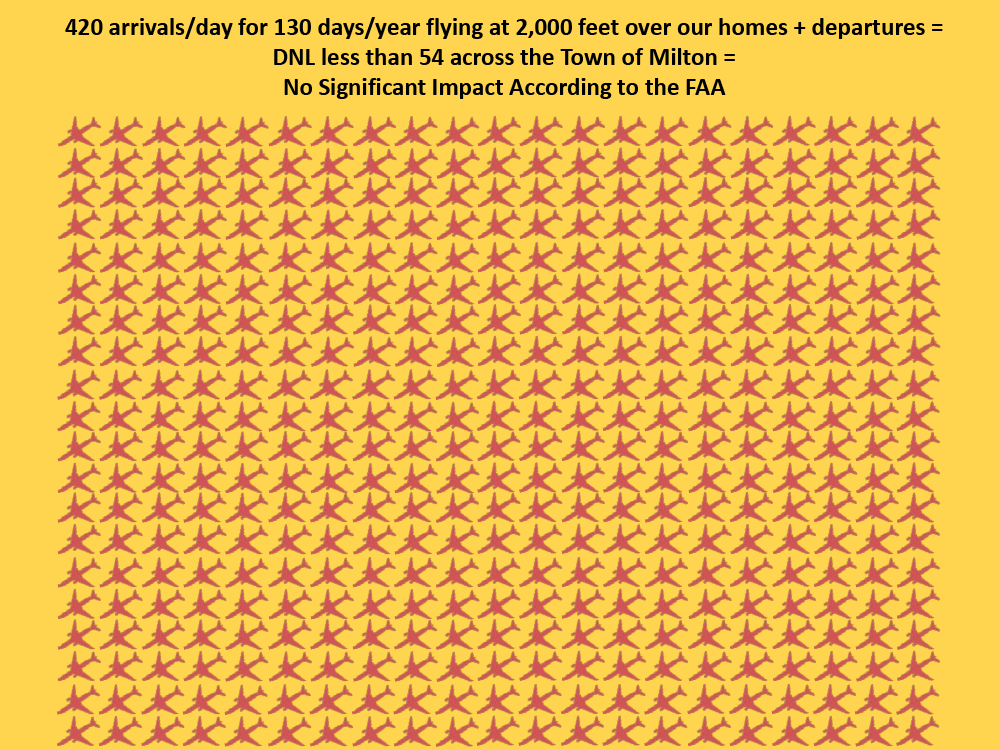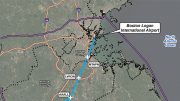Over the past year, Milton had 420 arrivals per day for 130 days out of the year.
These planes flew at 2,000 feet above our homes.
The FAA considers a DNL of less than 54 (Day-Night Average Sound Level) as having no significant impact.
The FAA considers a DNL of 65-80 to be the most impactful in terms of aircraft generated noise.
Here’s the question: How can 420 arrivals within 130 days have “no significant impact”?
What is a DNL?
DNL (Day-Night Sound Level) is based on sound levels measured in relative intensity of sound, or decibels (dB), on the “A” weighted scale (dBA). This scale most closely approximates the response characteristics of the human ear to sound. The higher the number on the scale, the louder is the sound. DNL represents noise exposure events over a 24-hour period. To account for human sensitivity to noise between the hours of 10 p.m. and 7 a.m., noise events occurring during these hours receive a “penalty” when the DNL is calculated. Each nighttime event is measured as if ten daytime events occurred.
It is the areas within the 65, 70, and 75 DNL noise contours that the FAA considers to be the most impacted by aircraft generated noise. Beyond the 65 DNL noise contour, noise is most noticeable in areas below established flight corridors.
Source: www.broward.org/Airport/Community/Documents/noisefaqs2.pdf








Be the first to comment on "Lots of planes, visualized"